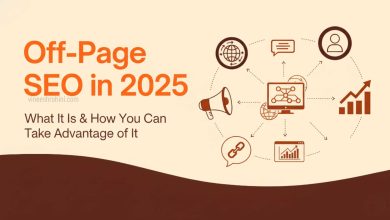Build Brand Awareness : Strategies to Boost Visibility : A Comprehensive Guide 2025
Build Brand Awareness : In the ever-evolving landscape of digital marketing and online business, one concept consistently remains at the center of long-term success: brand awareness. Whether you are a startup trying to make your first impression, an established company entering new markets, or a brand undergoing digital transformation, visibility plays a defining role in how your audience perceives and remembers you. While lead generation, conversions, and sales dominate conversations in marketing rooms, no meaningful performance can be sustained without strong brand awareness at the top of the funnel. Building brand awareness is not just about getting noticed—it is about being remembered, trusted, and preferred when your audience is ready to take action.
Table of Contents
Understanding the dynamics of brand awareness is essential for businesses that want sustainable, profitable, long-term growth. In this comprehensive blog essay, we will break down what brand awareness truly means, explore how visibility works, analyze the strategies behind it, compare different awareness-building approaches, and provide actionable insights to strengthen your brand presence. By the end of this guide, you will not only understand how to build brand awareness, but also be able to identify which strategies work best for your business objectives in 2025 and beyond.
What Is Brand Awareness?

Brand awareness refers to how easily your target audience can recognize, recall, or associate your business with a particular category, service, or value. It is the first and most crucial step in the customer journey, shaping perception long before customers ever consider buying from you. High brand awareness ensures that when people search for a product or service in your industry, your name instantly comes to mind.
Brands with strong awareness benefit from:
Higher trust and credibility
Increased organic search volume
Better engagement on digital platforms
More word-of-mouth referrals
Lower marketing costs over time
Also Read : 5 Ways Automation Will Scale Your Ecommerce Business : A Comprehensive Guide 2025
In short, brand awareness establishes the foundation upon which customer acquisition, loyalty, and long-term revenue are built.
How Brand Awareness Works
Building brand awareness is not about a single action—it is an integrated process. It begins with consistent visibility and gradually evolves into recognition, trust, and preference.
Here’s how brand awareness works in stages:
Visibility: The audience sees or hears about your brand across channels.
Recognition: They begin to recall your brand when they encounter your niche.
Trust: Repeated exposure and valuable content build credibility.
Preference: Among competing brands, customers choose yours first.
This journey mirrors the marketing funnel, aligning brand awareness with the upper stages of customer acquisition—similar to how CPC campaigns drive initial traffic in digital advertising.
Benefits of Strong Brand Awareness
Just as CPC drives immediate visibility, brand awareness strengthens market positioning in multiple ways.
1.Immediate Recognition
Consumers choose familiar brands over unknown ones, even when comparing similar products.
2.Competitive Advantage
A brand with high visibility stands out even in crowded markets.
3.Lower Customer Acquisition Costs
When audiences already know and trust your brand, marketing becomes more cost-efficient.
4.Improved Sales and Conversions
Brand familiarity increases click-through rates, purchasing decisions, and brand loyalty.
4.Long-Term Business Stability
Brands with strong awareness retain customers longer and outperform new competitors.
Challenges in Building Brand Awareness
Like CPC or CPA campaigns, building awareness comes with its own challenges.
1.High Competition
Thousands of brands fight for the same attention across digital platforms.
2.Short Attention Spans
The modern consumer scrolls fast and forgets even faster.
3.Content Saturation
With millions of posts published daily, visibility requires strategy, not luck.
4.Budget Limitations
Consistency demands resources, creativity, and time.
5.Maintaining Consistency
Brands need uniform messaging across all touchpoints to stay recognizable.
Despite these challenges, businesses that commit to long-term awareness strategies consistently outperform those that focus only on short-term sales.
Brand Awareness vs Direct Response Marketing
Just as CPC and CPA differ in goals, brand awareness and direct response marketing also serve different purposes within a marketing ecosystem.
| Factor | Brand Awareness | Direct Response (Leads/Sales) |
|---|---|---|
| Goal | Visibility and recognition | Immediate action |
| Focus | Engagement and perception | Conversions |
| Risk | Lower (broad reach) | Higher (depends on performance) |
| Metrics | Reach, impressions, recall | Cost per lead, ROI |
| Use Case | New brands, new markets, top-of-funnel | Established demand, bottom-of-funnel |
A balanced strategy uses brand awareness to attract and educate and direct response to convert, just as effective advertisers combine CPC and CPA models.
When to Focus on Brand Awareness
Brand awareness should be the priority when:
You are launching a new brand, product, or service
You want to expand into new markets
Your niche is highly competitive
Your competitors have stronger recognition
You want to build long-term authority
You need to fuel long-term organic growth
Example: A startup entering the fitness apparel market invests in storytelling content, influencer partnerships, and social media campaigns to build a recognizable identity before pushing for conversions.
Effective Strategies to Build Brand Awareness

Just as CPC and CPA require different approaches, brand awareness relies on specific, strategic methods.
1.Content Marketing
High-quality blogs, videos, guides, and educational content establish expertise and keep the brand top-of-mind.
2.Social Media Visibility
Consistent posts, engagement, value-driven content, and interactive features increase reach and loyalty.
3.Influencer Collaborations
Creators and influencers deliver authentic visibility and connect you with targeted audiences.
4.Paid Awareness Campaigns
Advertising on platforms like G, FB, YT, and Insta amplifies brand reach.
5.SEO and Organic Visibility
Ranking for relevant keywords helps users discover your brand naturally.
6.Community Building
Online groups, forums, and communities create strong emotional connections.
7.PR and Media Outreach
Features in blogs, news portals, and industry publications boost credibility.
8.Brand Storytelling
A compelling narrative builds memorability and emotional attachment.
9.Consistency Across Platforms
Uniform visuals, tone, and messaging solidify identity.
These strategies collectively strengthen brand visibility and ensure that audiences remember you—even before they become customers.
Advanced Strategies for High-Impact Brand Awareness
As digital ecosystems evolve, awareness-building strategies are becoming more intelligent, data-driven, and personalized.
1.AI-Powered Personalization
Smart algorithms help brands deliver tailored content to the right audience at the right time.
2.Interactive Content
Quizzes, polls, live sessions, and gamified elements enhance engagement.
3.User-Generated Content
Customer reviews, testimonials, and shared content amplify visibility organically.
4.Omnichannel Presence
Brands that deliver seamless experiences across platforms gain higher recall.
5.Voice Search Optimization
Optimizing for conversational queries aligns brand content with modern search behavior.
6.Experience-Based Marketing
Events, webinars, and workshops create memorable brand encounters.
Buy Now : Ecommerce Website
Brand Awareness in 2025: Future Trends
Just as CPC and CPA trends evolve, brand awareness strategies are also transforming.
1.AI-Driven Visibility
Machine learning is helping platforms recommend relevant brands to users based on behavior.
2.Short-Form Video Dominance
Platforms like Insta Reels and YT Shorts are reshaping engagement.
3.Privacy-First Marketing
First-party data and permission-based marketing are becoming essential.
4.Micro-Influencer Networks
Smaller influencers are delivering stronger, more authentic awareness.
5.Hybrid Online-Offline Branding
Brands are merging physical and digital touchpoints for immersive visibility.
6.Community-Led Branding
Brands with strong communities outperform traditional advertising models.
Conclusion

The debate around brand awareness is not about whether it matters—it is about how strategically it is approached. Brand awareness is the engine that fuels customer acquisition, loyalty, and long-term business sustainability. Direct response strategies like sales campaigns and lead generation may deliver short-term results, but without awareness, those results are difficult to sustain.
Buy Now : Ecommerce Website
A successful modern brand uses awareness-building techniques to establish presence, authority, and credibility, while combining them with performance-driven marketing to convert attention into revenue. By mastering brand visibility strategies, businesses can create a strong foundation that supports the entire customer journey—from the first impression to long-term loyalty.
Disclaimer
This blog is created for educational purposes only. Brand performance depends on industry, competition, audience behavior, and execution quality. Businesses should test, analyze, and optimize strategies before making large marketing investments.



